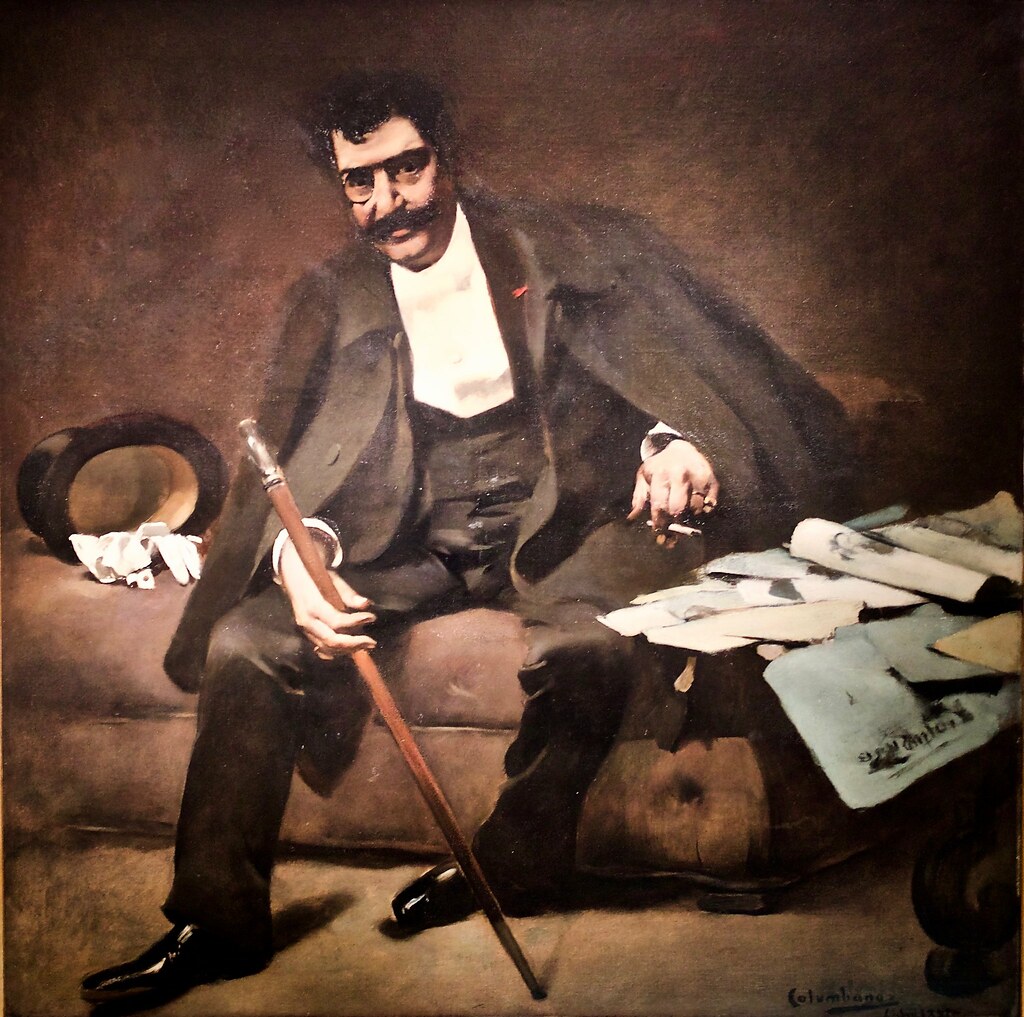On 7 May the Lyceum Club organised a guided tour of the Rafael Bordalo Pinheiro Museum.
The Rafael Bordalo Pinheiro Museum, created by the republican poet Cruz Magalhães in 1916, brings together the most complete Bordaliana collection, including ceramics, engravings, drawings and paintings, photographs and publications. It covers the life and work of Rafael Bordalo Pinheiro (1846-1905), one of the most prominent figures in 19th century Lisbon culture, politics and art, who was a draughtsman, watercolourist, illustrator, decorator and journalist, famous as a political caricaturist and critic of society with his “Zé Povinho”. He designed costumes and sets for the theatre, helping us to understand what theatre was in Portugal and its role in 19th century Lisbon. He won several prizes: a gold medal at the Colombian exhibition in Madrid in 1892 and 1895, in Antwerp (1894), Paris (1900) and the United States in 1904. Bordalo was telling the story of Portugal at the end of the 19th century.
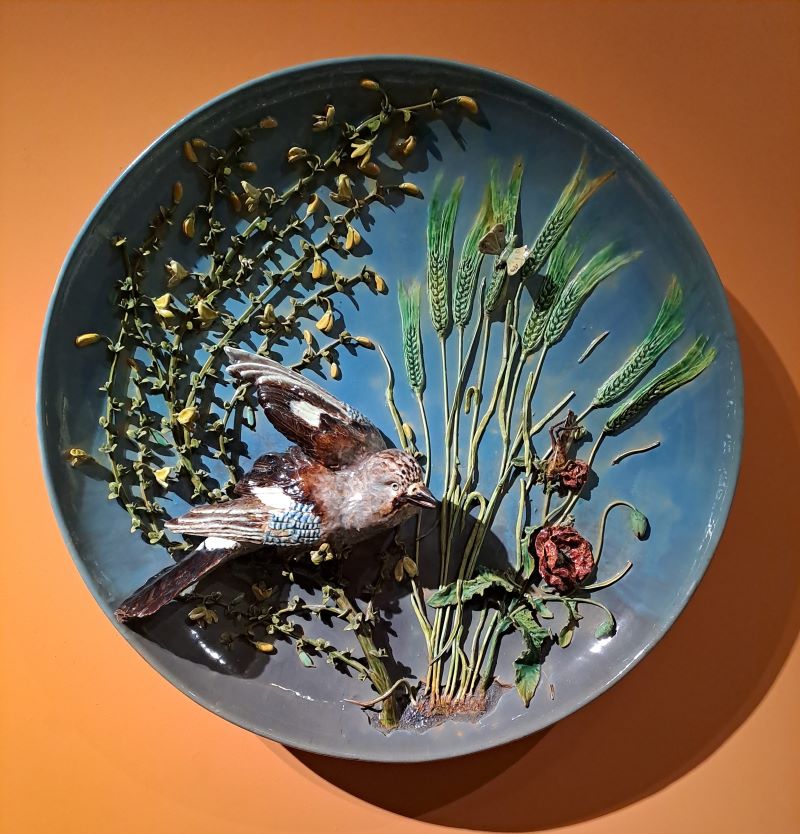
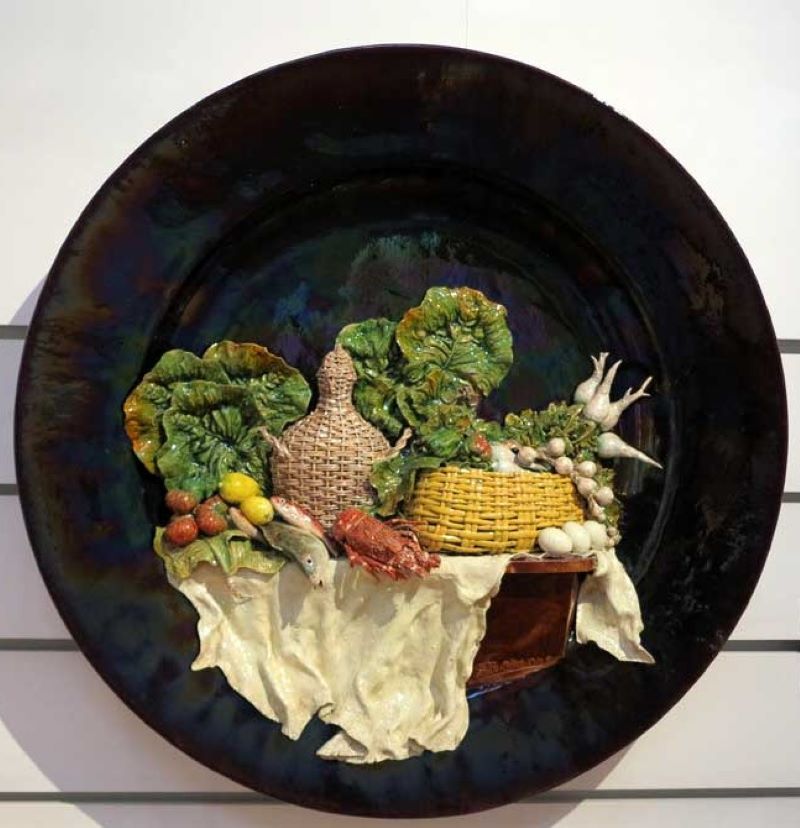

Rafael Bordalo incorporated an entire decorative programme in memory of the Discoveries, using Gothic architecture and a Manueline and ethnographic ornamental grammar. A belt of arches, cables, fishing nets, fish and miniature tiles frame the portraits of Prince Henry the Navigator and the poet Luís de Camões, as well as two scenes with caravels. The rigging forms the wings and the neck has repeated arches filled with micro-sculptures of the Passion of Christ. The cover is a Lusitanian roof with hanging winged figures, topped by an armillary sphere and a cross of Christ. The carving rests on a base covered with patterned tiles and coats of arms of Queen Leonor and the five chevrons of Portugal, with four feet in the shape of a lion lying down. It was bought by King Carlos and has been in the museum since 1926.
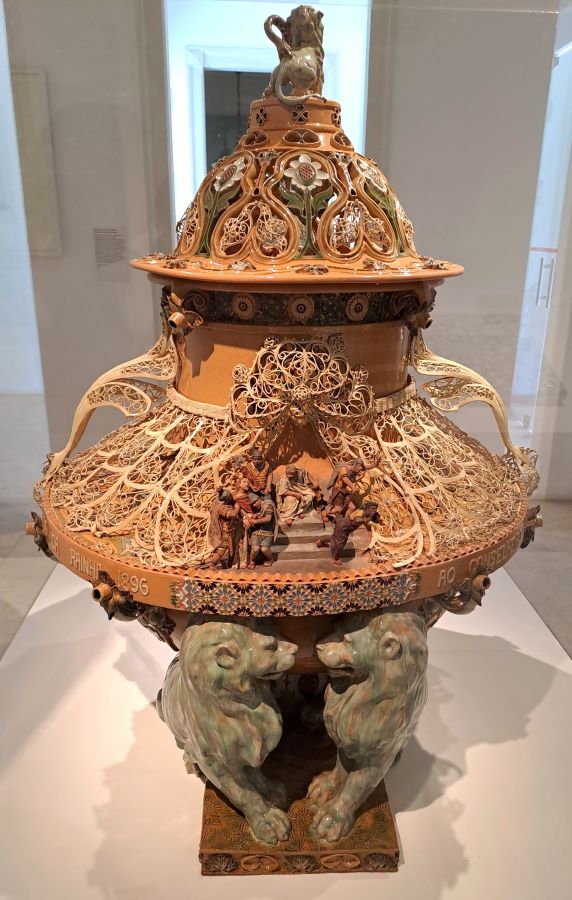
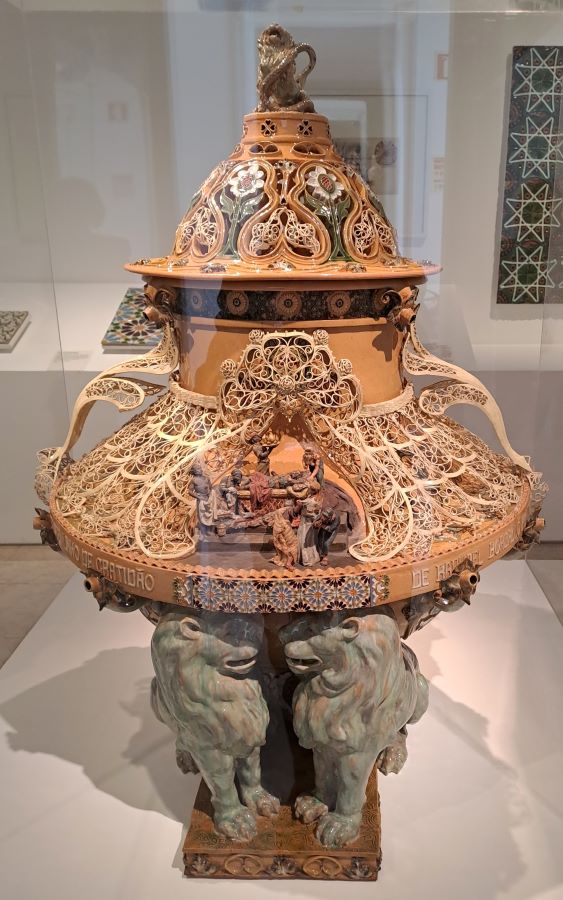
The Arabian Perfumer – Set on a rectangular base supported by four lions, the top of the bowl is covered in lace imitating filigree, and in two niches are miniatures of two sculptural groups from the ” Via Sacra “.
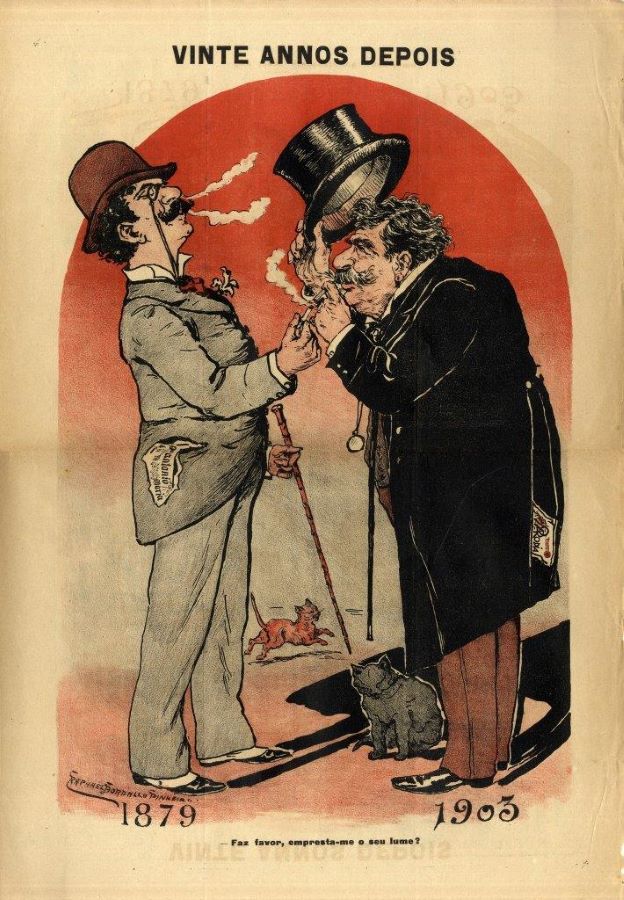
20 years later – This double self-portrait from 1903 shows the artist face to face at two moments in his life. A young and haughty Rafael lights his cigarette to light the cigarette of an old and cordial Rafael, who thanks him by raising his hat. The two eras are identified in the dates and headlines of the newspapers they take out of their pockets: “António Maria”, 1879 and “A Paródia”, 1903, his last newspaper. The cats accompany the times: in the first, a playful young cat, and in the second, a fatter, more tired cat.
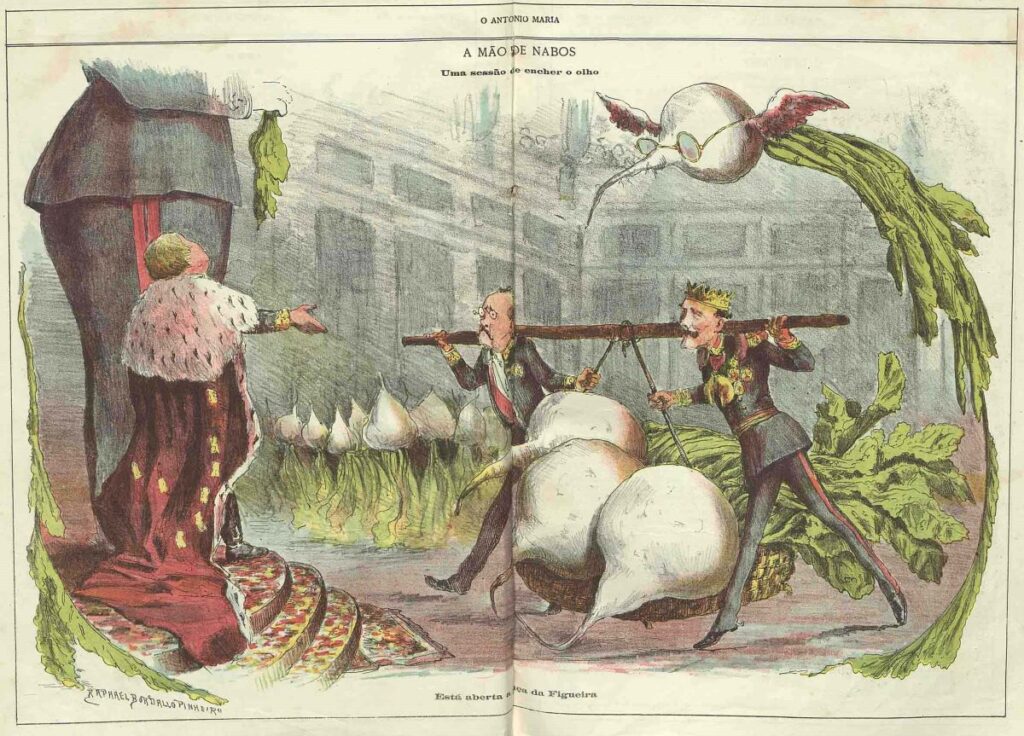
A Mão de Nabos – This lithograph of “O António Maria”, 1883, is a parody of the opening of the Praça-Câmara dos Pares, showing Fontes Pereira de Melo, head of the Regeneration government, and Luciano de Castro, head of the opposition Progressive Party, presenting the new turnip-pairs to King Luís on a padiola. At his side, the Constable of the Realm, the very tall Infante D. Augusto, of whom only his legs are shown. The entire audience is made up of standing turnip-pairs.
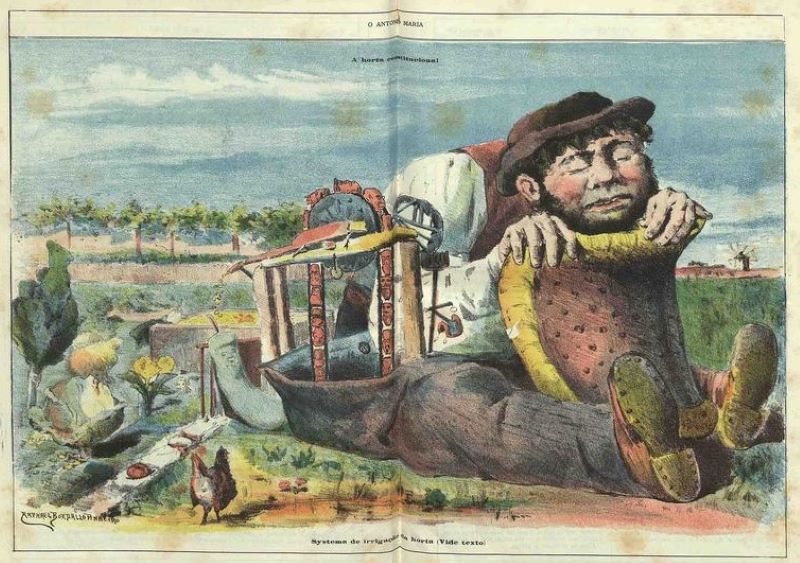
The Constitutional Vegetable Garden – Zé Povinho is sitting on the floor of a vegetable garden, his head resting on a saddle, next to a well from which a watermill pulls not water but coins out of Zé’s trouser pocket. The watermill’s buckets have the faces of the ministers and the vegetables in the garden are the figures of the royal house: King Luís is a cabbage, Princes Luís Filipe and Carlos are two flowers, Prince Augusto is a cabbage and Counsellor Arrobas is a cucumber.
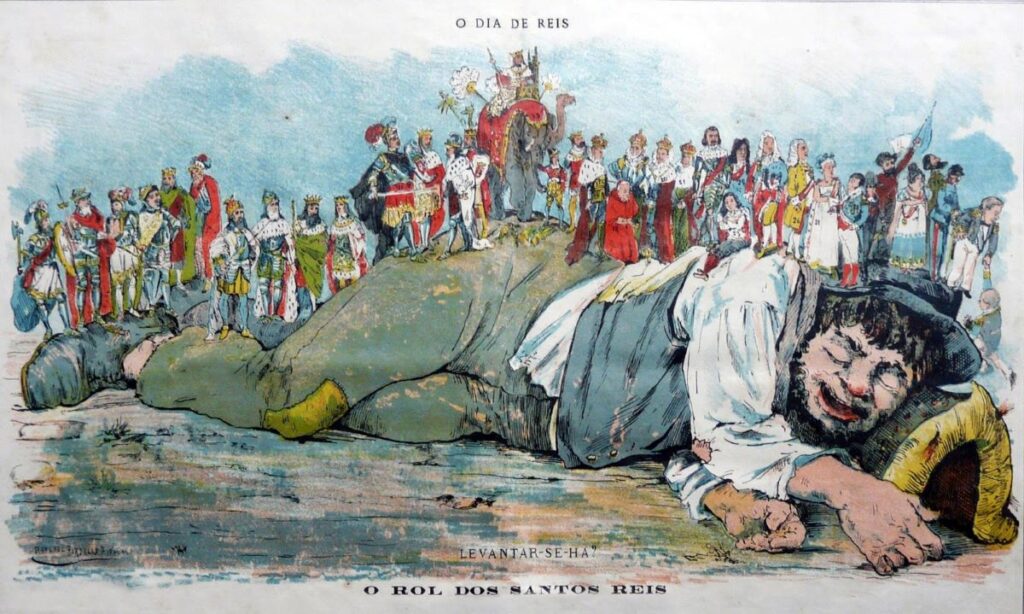
Three Kings’ Day – A sleeping Zé Povinho, with a saddlebag as a pillow, has all the kings of Portugal on his back, from Count Henry to Luís, who is already pulling his son, the future King Carlos, on top of him. The caption “levantar-se-há?” refers to the desire for the people to react and, by rising up, bring down the kings and, with them, the monarchy. The drawing was published in “O António Maria” on 6 January 1881, the day of the kings, deliberately confusing the liturgical calendar with the political state of the country.
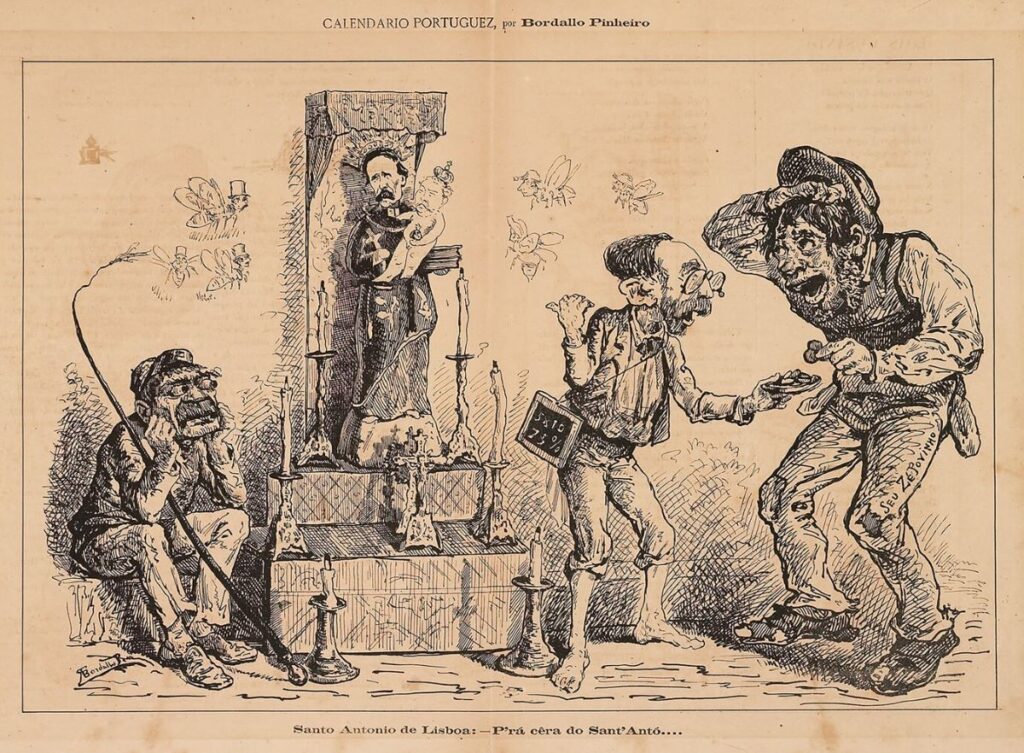
St Anthony of Lisbon – Published in “A Lanterna Mágica” in 1875, this is the earliest reference to the character and tells of a Zé Povinho surprised by a childish figure with an old man’s face (António Serpa Pimentel, Minister of Finance), who asks him for alms for St Anthony’s wax, pointing to the altar. This metaphor for the relationship between the government and the people is completed with a moustachioed Saint Anthony (Fontes Pereira de Melo, Prime Minister), with a baby Jesus on his lap (King Luís I), and a gentleman sitting with a whip watching the scene (João Bento Pereira, commander of the Lisbon municipal guard). The bees with faces like people are the various ministers. Zé Povinho reacts with a smile, handing over all the coins he has and scratching his head because he feels uncomfortable and has no other solution.

